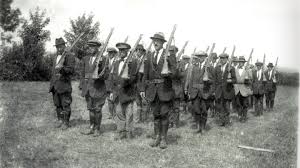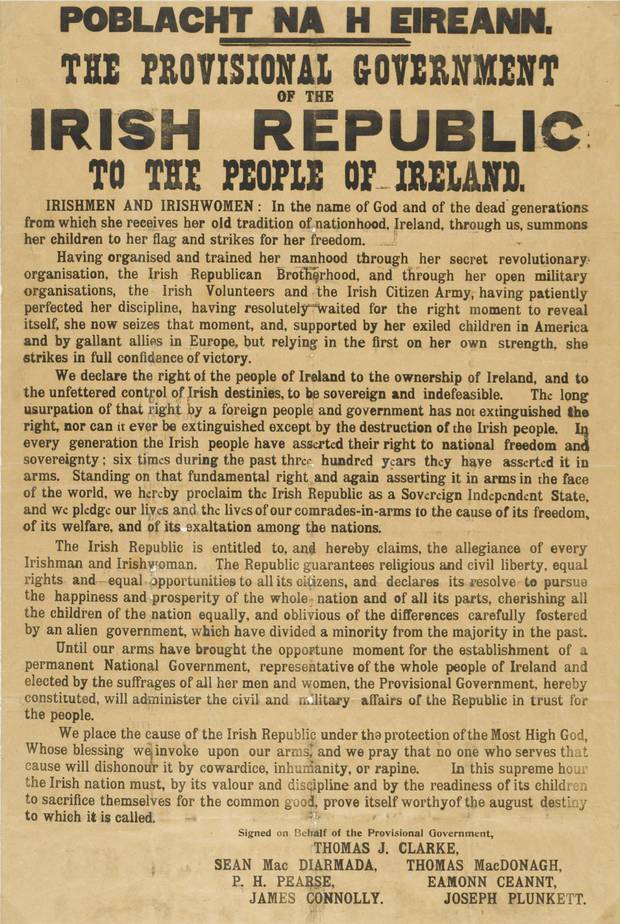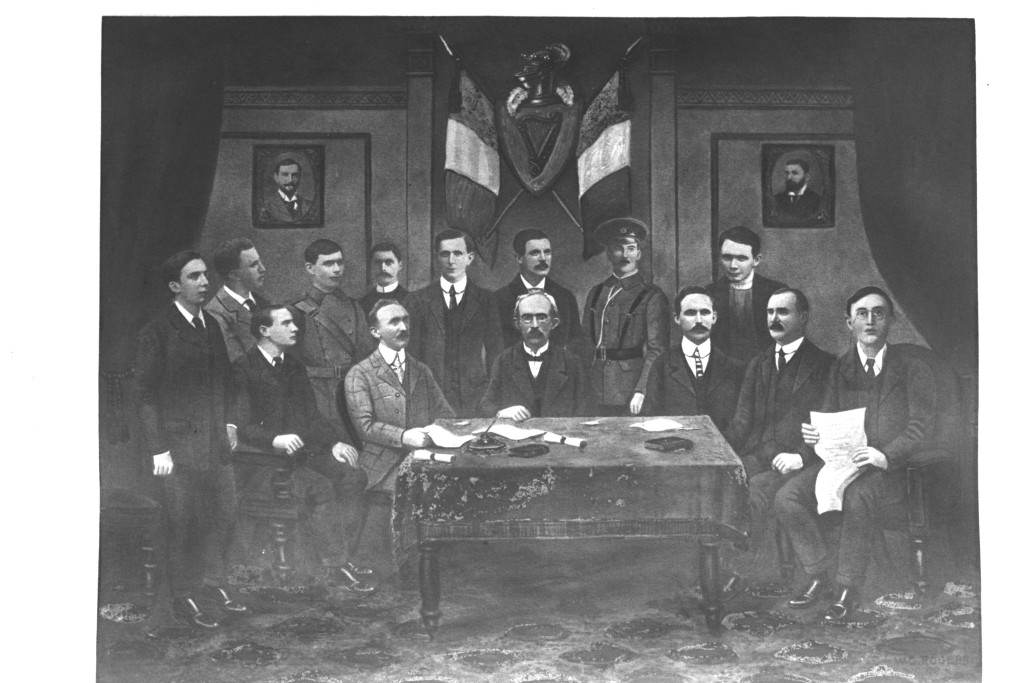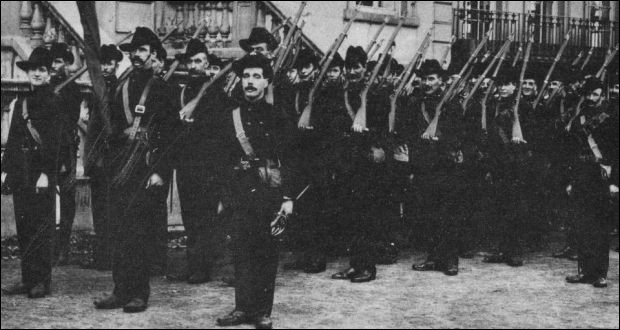
Formation of Irish Volunteer Force
Home
Historical Context
Conflict: The Rising
Easter Week 1916
Impact
Broken Barrier
Research
Image Above: The Seven Signatories of the Proclamation of Independance
The following are the main orginizatons that were a part of the Rising.
In 1913, Eoin MacNeill wrote a newspaper article that encouraged creating an army to promote Home Rule, and fight for it if necessary. This article inspired the formation of the IVF, which grew to over 160,000 volunteers. At the start of WWI, Home Rule was put on hold and there was a split in volunteers. Some left to fight for Britain in Europe with hopes of returning as a trained army for Ireland. Others stayed home in order to strike while Britain was distracted by WWI.

Formation of Irish Volunteer Force

The Proclamation of Independence read by Patrick Pearse in front of the Grand Post Office at the beginning of the Rising.
The IRB was formed on March 17, 1858 by James Stephens to establish an Irish Democratic Republic. They were the main mastermind behind the Rising. During the Rising, it was lead by Thomas Clarke and Sean MacDiarmada, IRB members. A young teacher and poet named Patrick Pearse moved up the ranks of the IVF and joined the IRB.
"My three-thousand mile walk through Ireland convinced me of one thing - the possibility of organising a proper movement for the independence of my native land.
~ James Stephens

Irish Republican Brotherhood discussing plans for the Easter Rising
The Irish Citizen's Army was formed by James Connolly, a Socialist, during the Dublin Lockout of 1914, to protect the working people on strike from police. The Dublin Lockout happened when 300 Dublin employers locked out 20,000 employees, in reaction to the employees unionizing. Connolly threatened to send the Army to fight the British, but the IRB persuaded him to join them instead.
"However it may be for others, for us of the Citizen Army there is but one ideal - an Ireland ruled, and owned, by Irish men and women, sovereign and independent from the centre to the sea, and flying its own flag outward over all the oceans."
~ James Connolly

The Irish Citizen's Army
Cumann na mBan was formed by a group of women in 1914. They acted as an auxiliary for the IVF and Irish Citizen's Army. They wanted equal rights for women if Ireland obtained independence. At the end of the Rising, the British authorities tried to send the women home, but some insisted on being arrested with their Irish brothers.

Cumann na mBan Members